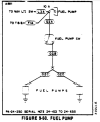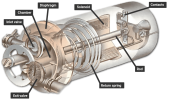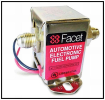- Joined
- Dec 7, 2018
- Messages
- 1,343
- Location
- The Lone Star State
- Display Name
Display name:
Chrisgoesflying
The auxiliary electric fuel pumps (two of them) on my Piper Comanche 250 went kaputt. No more tic tic sound when turning them on. My mechanic checked if current is flowing to them and it was the case, hence the conclusion is, the pumps are done. I checked the parts catalog and found out I need the part number 481-666. Quick research shows that McFarlane has an STC'd pump to replace P/N 481-666 for $300 each. Quick search on Texas Air Salvage was showing several used ones with part number 481-666 for $125 each. So, I ordered the two best looking ones from Texas Air Salvage. Again, both indicated P/N 481-666 in the listing. Today I receive the invoice and now both indicate the P/N 478-360. One being from Bendix, the other one being from Facet (Gold Flo). I check P/N 478-360 and Facet Gold Flo and on the Facet website, they clearly say the pump is not for aviation use. I couldn't find anything about the Bendix one with the P/N 478-360 regarding use for aviation. Comanche parts catalog does not list P/N 478-360 as an eligible fuel pump. Is 478-360 and 481-666 the same? Can the Facet pump be legally installed in a certified airplane (it came off of a PA-28)? If they are the same pumps, why the different P/N? I'm close to just cancelling the order and pony up for the STC'd pumps (which look exactly the same by the way) just to be on the safe side. Would hate to give the insurance or an overzealous ramp check agent any reason to not cover or fine me.




